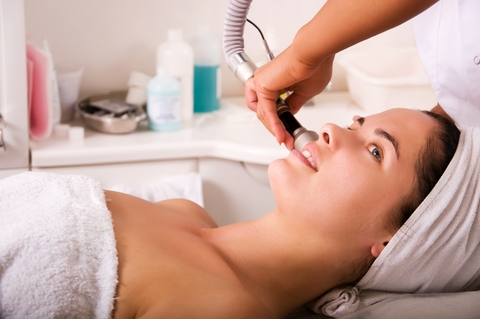 Fine lines and sun-damaged skin are common problems for patients who come to our Center. The treatment for this type of condition is resurfacing, but what type of resurfacing is best? For quite some time, the use of lasers has replaced the older technique of chemical peel. There is no question that the old deep chemical peel produced by the use of phenol compounds was
Fine lines and sun-damaged skin are common problems for patients who come to our Center. The treatment for this type of condition is resurfacing, but what type of resurfacing is best? For quite some time, the use of lasers has replaced the older technique of chemical peel. There is no question that the old deep chemical peel produced by the use of phenol compounds was
effective in reducing facial lines. Unfortunately, the price was rather steep with prolonged recovery, a relatively high risk of skin of lightning and the possibility of scarring. Patients are sometimes confused in thinking that the use of lasers provides for more effective elimination of lines’. Actually, the advantage of lasers primarily involves the potential for greater safety rather than greater effectiveness. The problem is deciding which type of laser to use.
The earliest surgical lasers utilized carbon dioxide as a medium for producing heat. The heat, which is intensely focused, was used as a cutting device. Indeed lasers still are commonly used as surgical cutting tools. Their advantage lies in precision and lack of bleeding. At our Center, laser cutting is commonly used in nasal and eyelid surgery as well as in the deeper layers of face lift surgery dissection. The idea of using laser energy for skin resurfacing is not new but difficulties arose in attempting to create an even pattern of applying the laser energy to the skin. This obstacle was overcome by the development of computer-driven pattern generators.
As laser skin resurfacing became more popular, the companies that made these machines began to heavily market them. One of the most popular marketing techniques was to hire consulting doctors who were provided with machines and in return were expected to present glowing reports of effectiveness at medical meetings. In an effort to gain competitive edge companies developed different types of lasers that purportedly were more effective with less risk. Again, they depended on physician consultants to promote the advantages of these newer machines. Another popular marketing technique involves the use of the lay press. Magazines are always looking for “cutting edge” articles, and nothing seems more attractive these days than
lasers.
Certainly the final answer is not yet in. However, we remain convinced that the choice of laser is far less important than the skill and experience applied to the technique. As in every operation, there is a fine balance between the effectiveness and risk. There is no escaping the fact that if the surgeon is overly aggressive in applying laser energy to the skin, regardless of the type of laser, the risk of complications increases. We continue to believe that a conservative approach utilizing the carbon dioxide laser offers patients a high degree of effectiveness with low risk. We do not believe that it is wise to attempt to eliminate all of the offending lines. We have also found that by adopting this conservative approach we can safely combined laser resurfacing with face lift surgery. By combining these two modalities, we can effectively take up the slack produced by aging and reduce the lines that have resulted from long-term skin damage with one operative session. This combination of face lifting and laser resurfacing has become increasingly common in our practice over the past few years.
Lasers will continue to play an important role in facial cosmetic surgery. Certainly there will be improvements in technology, but until such improvements are substantiated, we will continue to depend on our long-term experience with the carbon dioxide laser.


